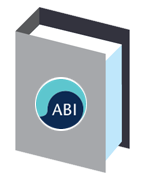
Solvency II Resources
As a provider of catastrophe modeling software and services, AIR is committed to helping our clients address the requirements of Solvency II.
This page acts as a central repository for Solvency II related materials, developed in whole or in part by AIR. The materials posted here are designed to assist clients-and ultimately regulators-in understanding not just the AIR models and software, but also the critical aspects of our business that will help to ensure the risks facing our clients are well understood.
Interim Guidance on Solvency II Compliance: Model Assumptions and Limitations |
||
Industry Good Practice for Catastrophe Modeling under Solvency II
|
||
Non Modeled Risks: A Guide to More Complete Catastrophe Risk Assessment for Re (Insurers)
|
||
Use of AIR Documentation in Company Model Validation DocumentsAIR invests substantial resources in the development of its models,modeling methodologies and databases. Many of the documents referenced in AIR's Solvency II resource documents contain proprietary and confidential information, which is intended for the use of AIR clients who are subject to the restrictions of the confidentiality provisions set forth in license and other nondisclosure agreements. These documents can be clearly distinguished by confidentiality statements within the documents themselves. However, AIR understands that for the purposes of meeting model validation requirements under Solvency II, our clients may find it useful to leverage excerpts and exhibits from AIR technical documents to use in their own model validation documentation. Such usage is permitted as long as the information is appropriately referenced, including the title of the AIR document and the numbers of any figures or tables used. It is also understood that, if such excerpts are used, the client's model validation documents will be circulated only within the company itself and to the regulator,thus maintaining the confidentiality of AIR documentation in line with existing licensing agreements. |
||
Access to AIR Documentation by Companies Who Do Not Directly License AIR SoftwareAIR is aware that many entities that are not clients of AIR but currently receive AIR model output through third parties (mainly brokers) may need access to AIR documentation for the purposes of meeting model validation requirements under various regulatory regimes, including Solvency II. In such cases AIR's policy is to invite those entities to contact AIR directly. AIR will then work with them to understand the exact documentation requirements and,where appropriate, release them under a non-disclosure agreement. |
||
Disclosure of AIR Documentation to RegulatorsAIR documentation may also be directly shared with regulatory bodies in the context of Solvency II if those regulatory bodies have entered into a binding nondisclosure agreement with AIR Worldwide. AIR clients who wish to instigate a discussion between AIR and a regulatory body or bodies with respect to a nondisclosure agreement should contact their AIR representative. To date, the following organizations have nondisclosure agreements with AIR:
|
HELPFUL LINKS
COVID-19 & Insurance Industry Careers Client Portal Events Center Touchstone Data Privacy and ComplianceSUBSCRIBE
Subscribe to our blog!
Privacy Policy
| US State Privacy Rights
| Information for California Business Contacts
| Condition of Use
| Trademarks
© 2000-2024 AIR Worldwide | All rights reserved.


